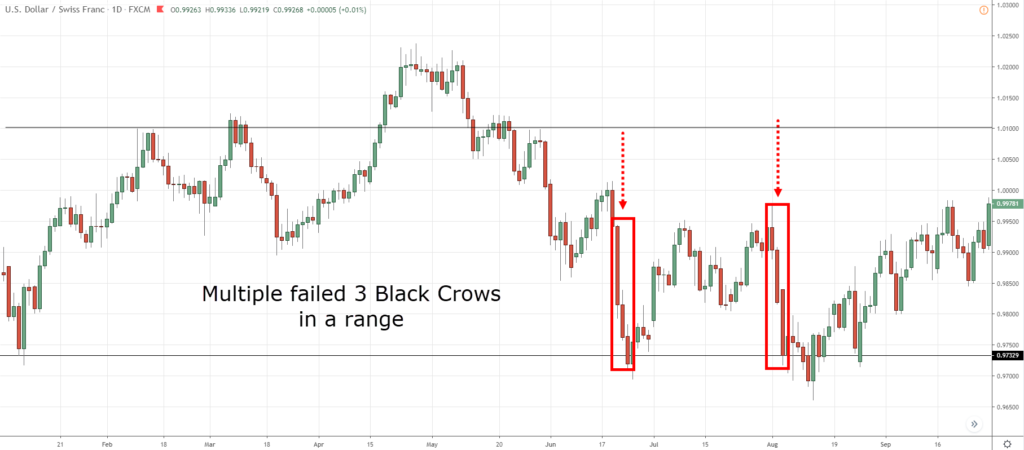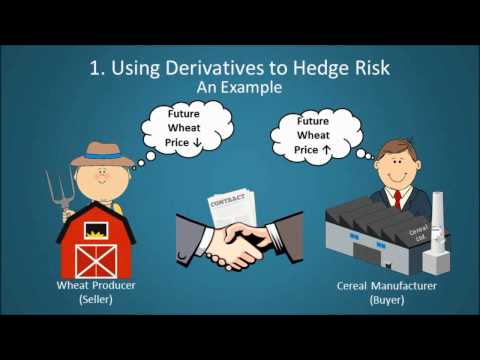Contents:

Or, to put it in simpler terms, IRR provides investors with an expectation of the annual return that they can earn on their investment. In most cases, the levered IRR should be higher than unlevered IRR. Business leaders must know why they are using or relying on certain figures to make important decisions. With this in mind, there are some unique disadvantages when using the different types. Both formulas include capital expenditures which typically take the form of capital investments that are used to grow and sustain the business. The term under leveraged refers to a company with little debt related to its assets.

Free cash flow yield is a ratio wherein a FCF metric is the numerator and the total number of shares outstanding is the denominator. A company with debt will have a higher unlevered FCF yield than a levered FCF yield. If you have an interest in Finance and want to work in the Financial Sector in the future, then you should know the difference between Leveraged vs Unleveraged. This is the most important topic of Finance which is used for cost analysis and project evaluation and Strategy implementation for the long run.
Best Internal Source of Fund That Company Could Benefit From (Example and Explanation)
When leverage is involved, we call the IRR metric “levered IRR”, but it is used in the same manner as unlevered IRR to analyze the investment. The primary differences in these cash flows hinge on the addition of business expenses within the equation. This is the primary block upon which the other differences will build. Levered Cash Flow can be defined as the amount of money that a company has left remaining after they have paid off all their dues and their financial obligations.
XL Fleet Corp. (XL) Q3 2022 Earnings Call Transcript – Seeking Alpha
XL Fleet Corp. (XL) Q3 2022 Earnings Call Transcript.
Posted: Wed, 09 Nov 2022 08:00:00 GMT [source]
To answer this question, investors need to calculate theInternal Rate of Return. IRRanalysis is one of the most used financialmetrics mostly used by professional investors whenever they are considering an investment project with an exit in the near to mid-term. They could also separate the effects of sector-wide changes in valuation from the portion of IRR attributed to strategic repositioning.
An unleveraged portfolio means the company is only using capital invested by the investors during the company formation or when investors infuse more funds in the company or purchasing the stocks of the company. Equity shareholders have the ownership interest in the business and they have the residual claim. There is no legal obligation to the company to pay the equity shareholders. The addition of an Unleveraged portfolio in capital reduces the company’s risk but it also constrains the company’s accessibility of the money for any opportunity investments.
In the case of Insolvency, the https://1investing.in/ has to pay the equity shareholders after settling all the obligations. Investments can have the same internal rate of return for different reasons. A breakdown of this metric in private equity shows why it matters.
Levered cash flow is the amount of cash a business has after it has met its financial obligations. The Willowdale Equity Investment Club is a private group of investors that are looking to passively grow their capital and share in all the tax benefits through multifamily real estate investments. A property’s levered IRR is almost always higher than the unlevered because it considers debt. The cash invested in the property is lower with financing, but the cash flow remains the same. Unlevered beta measures the market risk of the company without the impact of debt. • Of the two types of beta calculations, levered beta is said to be more accurate and realistic as company debt is taken into consideration.
Moreover, we need to subtract capital expenditures for the period. By adhering to this rule, we can ensure that we carefully pay attention to the risk of investment projects we enter and not unnecessarily end up selecting only bad projects with excessive risks. Project C actually is the same as Project B except we are using a 50% financial leverage (and not 90% anymore). The overall yield rate in this case is 4.95%, which differs slightly from the actual yield of 5%. Alone with metrics like ROE and ROI, a good IRR can be another indicator that helps make a buying decision. But still, there should be a way to approximate it, even if you have to make certain assumptions e.g. all the debt is a 5Y TLB with no amort etc.
Difference Between Coronavirus and Cold Symptoms
The time value of money states that a dollar earned today is worth more than a dollar earned in the future due to its ability to be reinvested and earn interest. For this reason, cash flows that are earned earlier in the holding period can drive higher returns than those earned later in the holding period. To prove this point, use the levered scenario above and switch year 2 and year 5. The reason is because the IRR calculation assumes that the year 2 cash flow is reinvested and earns interest in years 3, 4, and 5. On the other hand, the reason that some businesses showcase unlevered free cash flow is to inflate the financial picture in order to make a good impression on investors. Although this may not always be the case, it is certainly true that cash flow looks strongest before debt payments are made.

Notice how we have conflicting outcomes from the single year and multi-year analysis. However, in this multi-year analysis using the same cash flows and no growth or appreciation, we show neutral leverage. In a levered scenario, the upfront equity contribution and the annual cash flows are lower—but the overall returns are higher.
Specifically in irr levered vs unlevered, leverage means borrowing money from a lender to help fund the purchase of a property. Leverage is the use of borrowed money to increase the potential return of a specific investment and decrease the amount of money you need to purchase a property. This guide will explore the concept of leverage, returns with leverage, and what happens to returns when you don’t utilize leverage. That’s because owning real estate properties is a great way to generate monthly income and the asset value generally increases in value over time. Tells how much more the sum of one or more of CAPEX + Interest + Debt is than operating cash flow, depending on which FCF metric is used. Tells what portion of enterprise value can be accounted for in one year’s FCF.
How leverage can make you rich?
In other words, the return from buying and holding the investment without further changes contributed ten percentage points of the 58 percent IRR. Strong performance on this measure could be an indicator of skill in acquiring companies at attractive terms. As illustrated in the table above, our cash on cash goes from 5% in a 0% loan to value scenario, down to -8.55% in a 90% loan to value scenario.
WACC and IRR: What is The Difference, Formulas – Investopedia
WACC and IRR: What is The Difference, Formulas.
Posted: Sat, 25 Mar 2017 17:26:39 GMT [source]
We will be looking at leverage on a single year basis and a multi-year basis. It may be helpful to refer to these definitions as we work through some examples below. The Internal Rate of Return is the annual return that sets the net present value of cash flows equal to zero. Instead, IRR can be calculated using MS Excel or some other spreadsheet program.
If we instead had positive leverage, then the cash on cash return would increase as more debt is added to the property. If we had neutral leverage, then the return would not change at all. We have a 2,000,000 purchase price and a 1,200,000 loan amount. To keep the calculations simple, the loan has an annual interest rate of 5% and annual loan payments amortized over 30 years .
On the other hand, a company that uses the levered free cash flow formula doesn’t have the same obligation of paying those amounts . This isn’t to say that the company is not responsible for its debts, investments, or taxes, but simply that it doesn’t need to settle them prior to reporting unlevered free cash flow. The term ‘unlevered’ in free cash flow corresponds to the amount of money that is available before meeting financial obligations.
- As such, you can use other financial ratios instead to calculate for the financial feasibility and profitability of the investment.
- IRR is the time period for which they are used for calculating the performance of investments.
- Simple Free Cash Flow is the basis for calculating levered and unlevered free cash flow, so we need to understand it well.
- I played with this in Excel and it doesn’t look like this works…
Covariance is an evaluation of the directional relationship between the returns of two assets. Convexity is a measure of the relationship between bond prices and bond yields that shows how a bond’s duration changes with interest rates. The theoretical cost of a company financing itself, assuming no debt.
Free Cash Flow Conversion: Levered and Unlevered
You may also use leveraged and leveraged results as measurements for your own investment returns. As shown above, the unlevered cash flows produce an internal rate of return of 8%. This happens because the interest rate component of the loan (10.0%) is higher than the return component of the underlying property (8.0%).
- In contrast, others argue that in some markets, even 5 to 7 percent is acceptable.
- This is also known as the lender’s yield, or just the interest rate if there are no other points or charges.
- When analyzing a potential real estate investment, it’s important to use the right financial metrics.
- For example, two different deals, with a 10x entry/exit EBITDA multiple, 5% revenue growth, and constant EBITDA margins will return vastly different IRR’s if their capex profile is different.
Suppose we only know the equity capitalization rate and the mortgage capitalization rate, and we want to solve for the overall capitalization rate. Let’s first discuss how to use the WACC formula with single year capitalization rates. Then we will discuss an issue you should be aware of when using the WACC formula with multi-year yield rates. The WACC formula is derived from the fact that the property cash flow is equal to the debt cash flow plus the equity cash flow.

We defined these terms using single year capitalization rates, and also using multi-year yield rates. After reviewing single year and multi-year example calculations, we then discussed how you can use the weighted average cost of capital formula to analyze leverage with limited information. Whereas levered free cash flows can provide an accurate look at a company’s financial health and the amount of cash it has available, unlevered cash flows provide a look at the enterprise value of the company. Levered beta measures the sensitivity of a security’s or portfolio’s tendency to perform in line with the market or against the market. A levered beta with a positive value shows that the security’s value will perform with the market and a levered beta with a negative value means that the security’s value will perform against the market.
